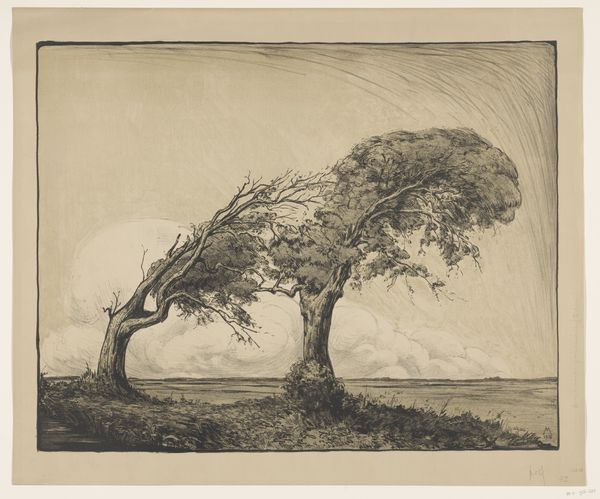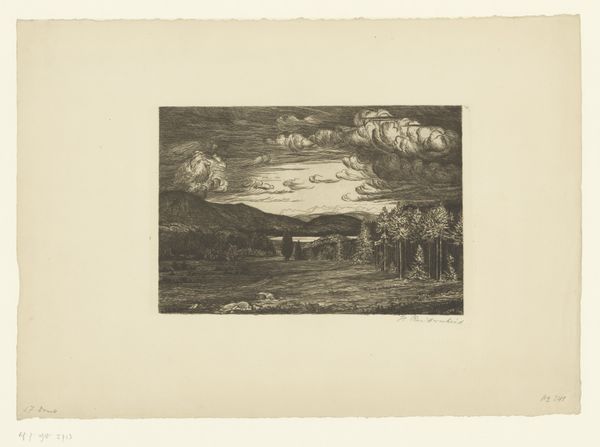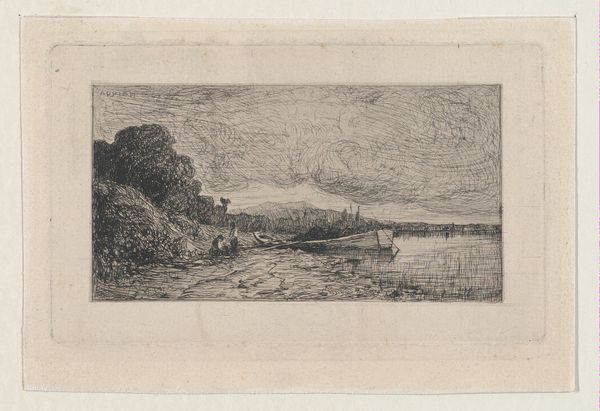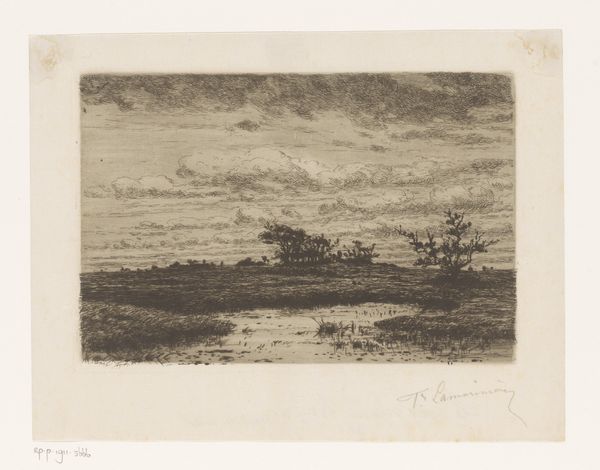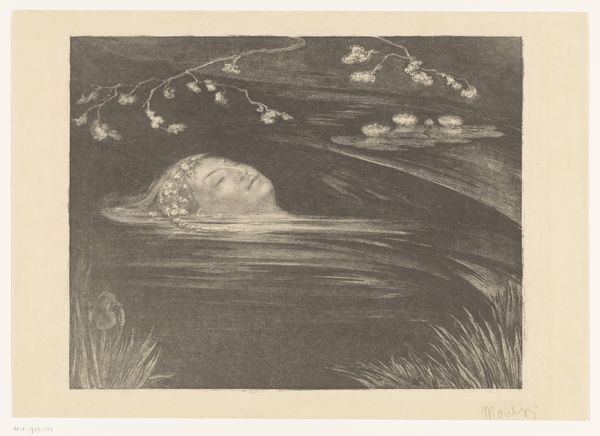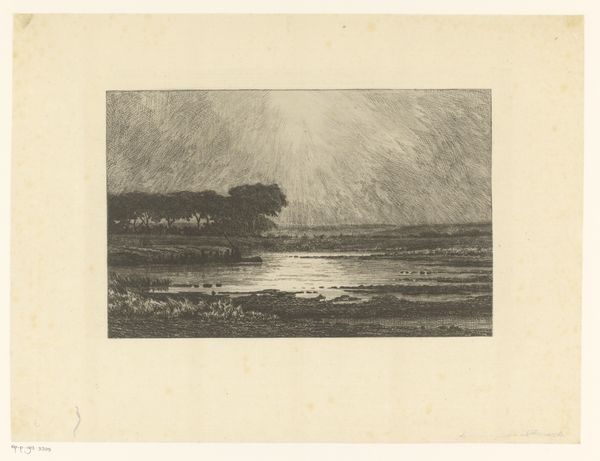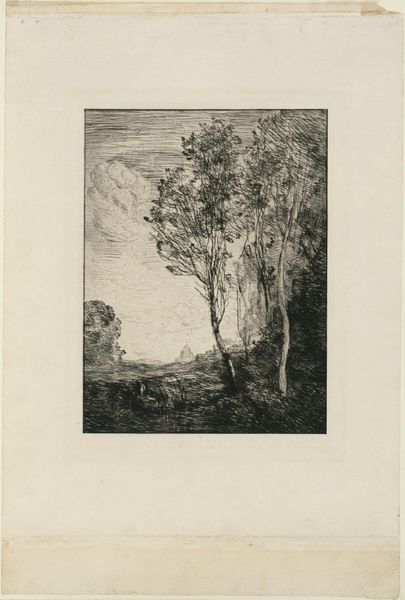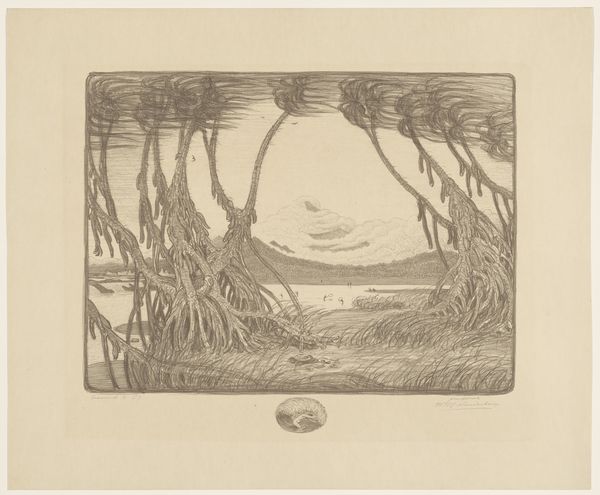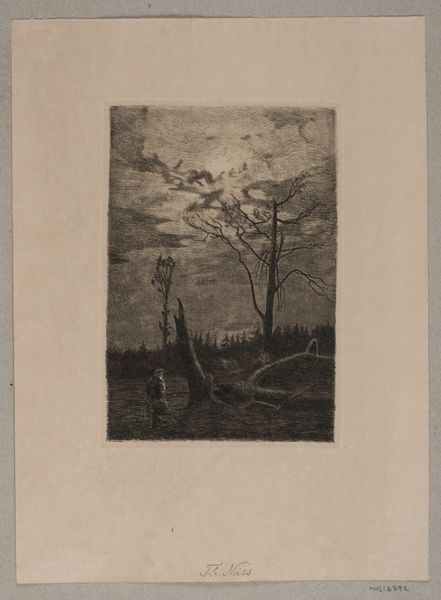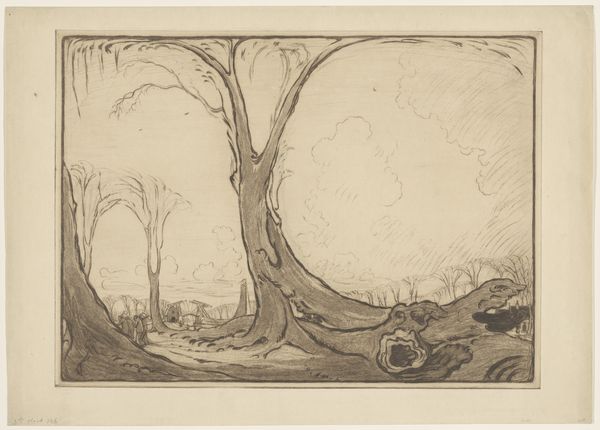
Dimensions: height 416 mm, width 556 mm
Copyright: Rijks Museum: Open Domain
Curator: The stark, almost oppressive sky seems to dominate this work. There’s a stillness that feels loaded, expectant, doesn't it? Editor: Indeed. We're looking at "Glooiend Landschap", or "Rolling Landscape", a graphite drawing executed by Simon Moulijn in 1893. Currently it is held here at the Rijksmuseum. Its delicate impressionistic style captures a particular Dutch vista, one filtered through the artist’s unique perspective. Curator: The near absence of figures strikes me. The geometric lines in the fields and clouds are precise, yet also unsettlingly dehumanized. It reflects a late 19th century anxiety about land ownership and social hierarchy. The emphasis on geometric elements, in fact, brings into view a power dynamic –the people as labor are off the view. Editor: That is a astute observation. Considering the period, one must reflect upon how land representation intertwined with burgeoning national identity and industrial advancement. Landscape art in this era often acted as both a celebration of pastoral beauty and a subtle assertion of control over the environment. It could very well serve an intended and perhaps unintended ideology of a growing bourgeois. Curator: The choice of graphite is particularly compelling. Graphite’s ability to create subtle tonal variations and textures transforms what could have been just a simple sketch, into a work resonating social power and industrial revolution. It certainly elevates this humble material, pushing graphite's conceptual limits. The artist brings the medium into the question of cultural anxieties of his time. Editor: Exactly! What this work shows us is that artists and their materials never exist in a bubble. Moulijn likely encountered and deliberately decided to follow—or go against—prevailing norms of academic landscape art in order to contribute, wittingly or not, to the politics of imagery. Curator: By investigating seemingly “simple” landscapes, we unlock these profound insights into the intersection of social history, ideology, and the very tangible conditions of material artistic practices. Editor: A potent reminder of art's ever-evolving role in reflecting and refracting our complex reality.
Comments
No comments
Be the first to comment and join the conversation on the ultimate creative platform.
